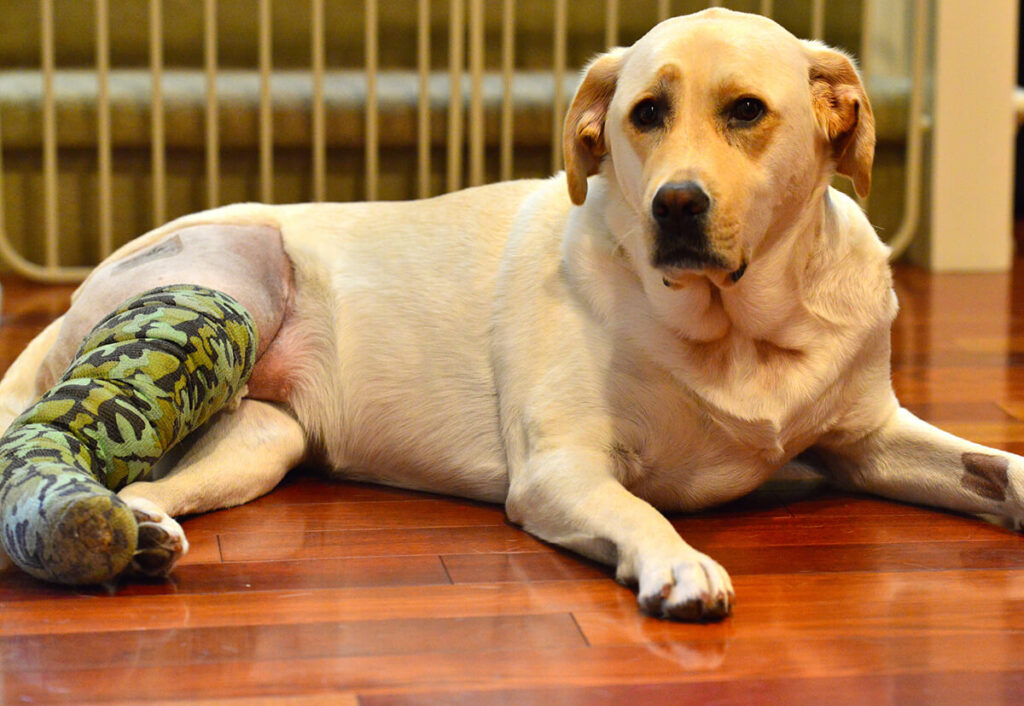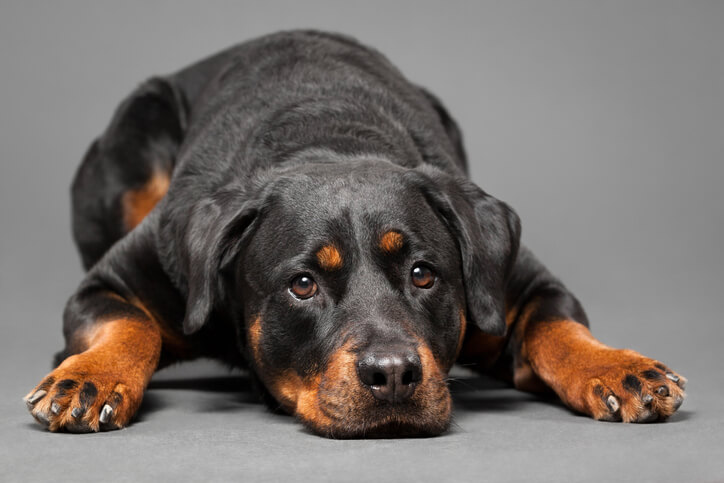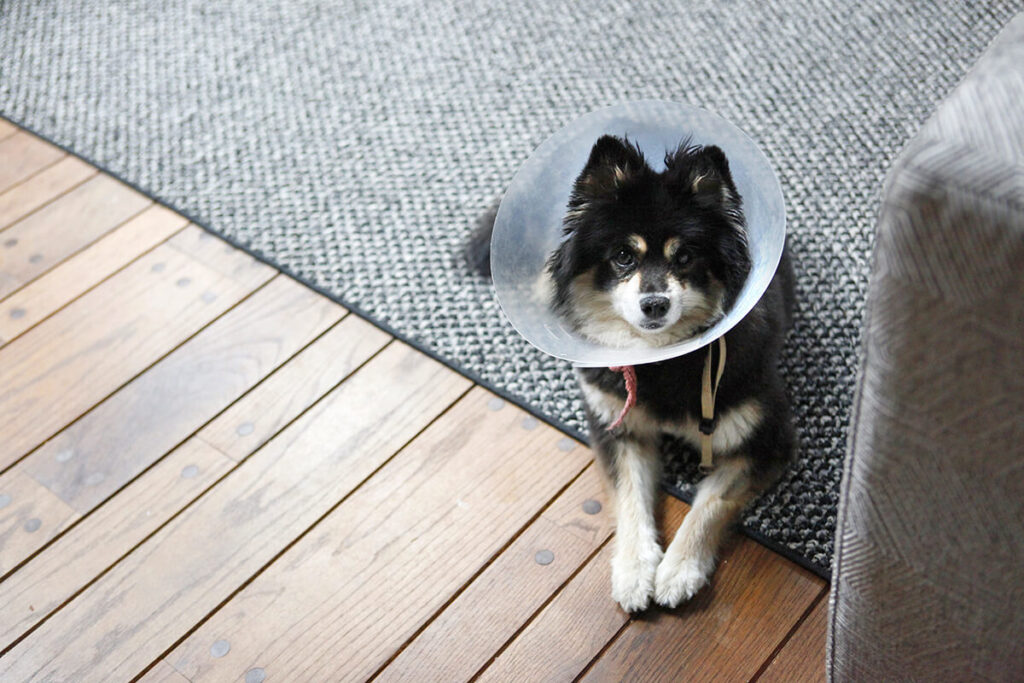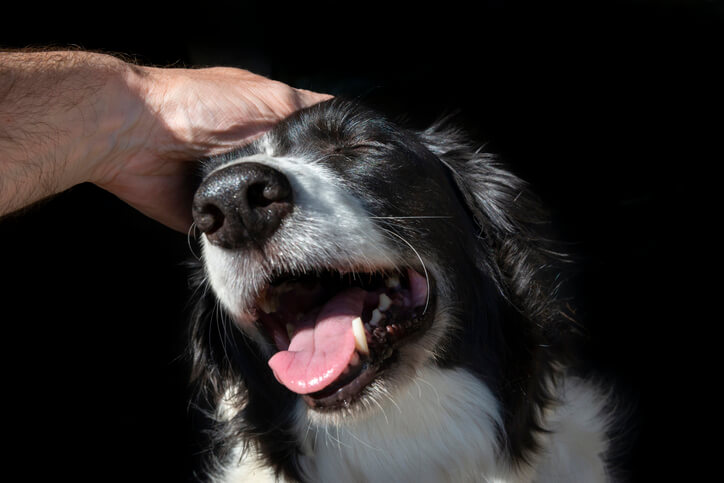Your dog is an important member of your family. You spend years lovingly playing with them and taking care of them. But despite your best effort, your dog will likely suffer an injury at some point. An ACL tear might be one of those injuries.
ACL Tears in Dogs: Symptoms, Treatments, & How to Avoid Them
While it is a very serious situation, it is easily treatable. In this article, we will discuss everything you need to know about ACL tears in dogs — which breeds are the most susceptible, how you can recognize symptoms of an ACL tear, and how these injuries are diagnosed and eventually treated.
What is a Torn ACL in Dogs?
When discussing a torn ACL in dogs, this refers to the cranial cruciate ligament (CCL). It’s the connective tissue that connects the bone below the knee to the bone above the knee. This ligament stabilizes a dog’s knee joint, making it crucial for movement. While dogs don’t have an ACL, this is a near-direct comparison. Experts refer to this ligament as an ACL as it makes it easier for pet owners to understand — just as we will do in this article.
Unlike people, dogs never bend their knees. Because of that, this ligament is always load-bearing within their bodies. That means it has to withhold a great deal of stress and is prone to wear and tear.
A dog’s ACL can rupture for several reasons, but the injury mostly stems from the result of a twisting motion. For example, a younger dog may tear its ACL if it jumps off of a high surface or runs across an uneven surface. An older dog may tear its ACL from years of running, twisting, and jumping — a minor injury can be what sets it off. Obese dogs or those not properly exercised will be more prone to ACL tears in their lifetimes.

Which Dog Breeds are Most Susceptible to a Torn ACL?
Any dog can tear their ACL in the right circumstances. However, some breeds are naturally more prone to this injury than others. The dog breeds on the following list are some of the most prone to ACL tears:
- Bichon Frises — This breed’s playful demeanor can lead to a luxating patella, also known as a slipped kneecap. This can lead to inflammation, cartilage damage, and ligament tears.
- German Shepards — These dogs are very active, have large frames, and are prone to hip dysplasia. If they gain too much weight, that’ll put too much stress on their joints, which can eventually lead to an ACL tear.
- Golden and Labrador Retrievers — These are medium-sized dogs with a large build. So just like German Shepards, gaining too much weight will put too much pressure on the ACL and cause it to tear.
- Newfoundlands — A study from the Universities Federation for Animal Welfare (UFAW) discovered that this breed has a gene related to ACL tears. Owners should monitor this breed’s weight and encourage physical activity to avoid injury.
- Saint Bernards — These dogs are massive, making them more prone to hip dysplasia. To avoid unnecessary stress on their joints, these dogs should not be taken on long walks until their muscles and bones are fully developed.
- Australian Shepherds — This breed is incredibly athletic and energetic. Owners should focus on physical activities to help Australian Shepherds strengthen their cores to avoid an ACL injury.
- Rottweilers — These dogs are three to seven times more likely to injure their ACLs than other breeds, likely due to their large build.

What are the Symptoms of a Torn ACL in Dogs?
A clear symptom of a torn ACL in a dog is trouble with mobility — although dogs experiencing minor ACL injuries can still walk to a degree. However, symptoms may range a bit depending on the severity of the injury and the individual dog’s pain tolerance.
You’ll likely see some level of lameness in your dog, as they won’t be able to put too much weight on the injured leg. A dog with an ACL tear will avoid jumping into your car or have difficulty rising from the ground. Look out for a popping noise when your dog moves if you’re worried they may have torn their ACL.
In addition to decreased mobility, you may notice that your dog is no longer able to sit “squarely,” meaning that they’ll stick their injured leg out to the side when seated to avoid pressure on that limb.
An indicator of a torn ACL is the presence of the “drawer sign”. In order to identify this, WebMD states that a veterinarian will “hold the dog’s femur in place, so the tibia can be pulled forward like a drawer sliding open.” But keep in mind that the lack of the drawer sign does not necessarily mean that your dog’s ACL has not been injured. Further testing and examination by your veterinarian will be needed to formally diagnose the injury.
How is a Torn ACL in a Dog Diagnosed?
A veterinarian will conduct a thorough examination to diagnose a torn ACL. The purpose of this examination will be to check the dog’s gait. The exam may start with a few physical tests. In addition to checking the dog for the presence of the drawer sign, a vet will likely conduct the tibial thrust test.
The tibial thrust test involves a vet assisting the dog in mimicking weight bearing. This allows them to see how the front of the tibia is pushing forward in relation to the femur. They’ll also examine the dog for loss of muscle mass, swelling around the joint, or scar tissue.
In addition to performing physical exams, your vet will likely take x-rays of your dog’s knee. That way, other causes of lameness in your dog’s knee can be eliminated. This means that the full extent of the damage can be accurately assessed.
X-rays can also help detect the presence of joint effusion (fluid accumulation in the joint) or any small pieces of bone that broke off when the ligament ruptured. All of this information will help the vet determine the best treatment plan for your dog.
How are Torn ACLs in Dogs Treated?
Surgery with subsequent physical therapy is the most common treatment route for dogs with ACL injuries. Surgery is the only option if your dog has a fully-torn ACL. Your veterinarian will likely recommend one of the three following surgeries, based on the size of your dog:
- Extracapsular Repair — This surgery is best for small dogs. It involves placing a monofilament suture outside the joint, passing it around the backside of the femur, and then running it through a hole drilled in the top of the tibia.
- Tibial Tuberosity Advancement (TTA) — This technique, best for medium and large dogs, involves cutting the front part of the tibia to help realign the bone. This procedure eliminates abnormal sliding forward within the joint.
- Tibial Plateau Leveling Osteotomy (TPLO) — This procedure is one of the most popular surgeries for repairing the ACL. It’s recommended for large dogs or those with a steep slope of the tibia. This procedure involves removing the torn ends of the ligament and damaged parts of the meniscus.
If your dog is suffering from a minor ACL tear you can talk to your veterinarian about exploring one of the following non-surgical options:
- Activity Restriction and Anti-Inflammatories — Treat your dog with a carefully monitored dosage of pain medication other than Aspirin until their mobility has improved. As Colorado State University states, “this treatment is generally not advised, but it may be appropriate for individual dogs due to some combination of their small size, inactive lifestyle, other concurrent injuries or diseases, or financial realities.”
- Rehabilitation Therapy — If your dog is a senior or suffering from concurrent injuries or diseases, you may be able to opt for rehabilitation therapy instead of surgery.
- Cold Laser Therapy — This relatively new laser treatment emits light energy directly into the tissue of the damaged ACL. Cold laser therapy may help decrease inflammation, alleviate pain, and potentially stimulate healing.
What Does ACL Tear Recovery Look Like?
As PetMD says, overall recovery for ACL surgery, “will vary but can be anywhere between 4-6 weeks with a slow introduction of activity onto the leg over 8-12 weeks in total. In some dogs with more chronic [ACL] tears, [recovery] can take up to 6 months.” Your dog’s weight, how long the tear was present, and the degree of arthritis or inflammation in the joint will likely impact how long it takes your dog to recover.
Your vet will guide you on this front, along with providing a plan for a gradual return to normal activity for the dog. This will likely include instruction for range of motion exercises for your pet. But at the same time, you’ll be tasked with restricting your dog’s activity in the early days and weeks of recovery.
PetMD states that your vet will likely recommend crate rest for the first 10 to 14 days while the incision heals. Don’t force your pet to put weight on their leg. However, notify your vet if your dog is not putting any weight on the injured leg within the first 1-2 days at home. When a dog goes too long without using its leg, those muscles can become stiff and contract. When that happens, their recovery will become far more difficult.
But once your dog is becoming mobile again, restrict them from running, jumping, or climbing stairs for the first few weeks of recovery. Eventually, work your way up to short leashed walks with your dog. Monitor your dog’s stitches and the surgical site for redness or inflammation. They’ll likely need to wear a cone so they don’t chew on or lick the incision.

How to Prevent Injury/Reinjury of Your Dog’s ACL
Unfortunately, nothing can prevent an ACL injury with complete certainty. Dogs of a certain age, breed, or weight will always be at higher risk than others. But here are some steps to take to keep your dog as safe and healthy as you can:
- Feed your dog a balanced diet — Make sure your dog gets plenty of protein to support the growth and repair of their tissue. You can also include healthy fatty oils like Omega-3 to help joint care and development.
- Avoid weekend warrior syndrome — This refers to a dog that is sedentary during the week but active on the weekends. You can avoid this by exercising your dog regularly on weekdays and weekends.
- Restrict your dog from high jumping — When a dog jumps high, it can land wrong on its knees. That can lead to a torn ACL.
- Keep your dog at a healthy weight — Too much weight on your dog’s frame can lead to an ACL injury. Keep your dog’s weight in check with a healthy diet and regular exercise.
- Give your dog joint supplements — A joint supplement is a great way to get ahead of any potential ACL injuries. Talk to your veterinarian about which supplement would be right for your dog.
Sometimes you can do everything right and your dog will still injure itself. When that’s the case, make sure you’re aware of the early symptoms of an injured ACL. If your dog’s mobility seems to be off and they won’t put weight on one of their legs, get in touch with your veterinarian so they can examine your dog as soon as possible.

TL;DR — An ACL Tear in a Dog is a Serious But Treatable Injury
ACL tears are most common in large and older dogs. These injuries are serious and will likely require your pet to undergo surgery. With careful monitoring and light exercise, they’ll recover well. Make sure to keep your dog healthy with a balanced diet with joint supplements, avoid weekend warrior syndrome, and watch their weight to avoid reinjury or a tear in the other ACL.
Are you worried your dog has suffered an ACL injury? Contact us today to schedule a thorough examination with one of our veterinarians.
